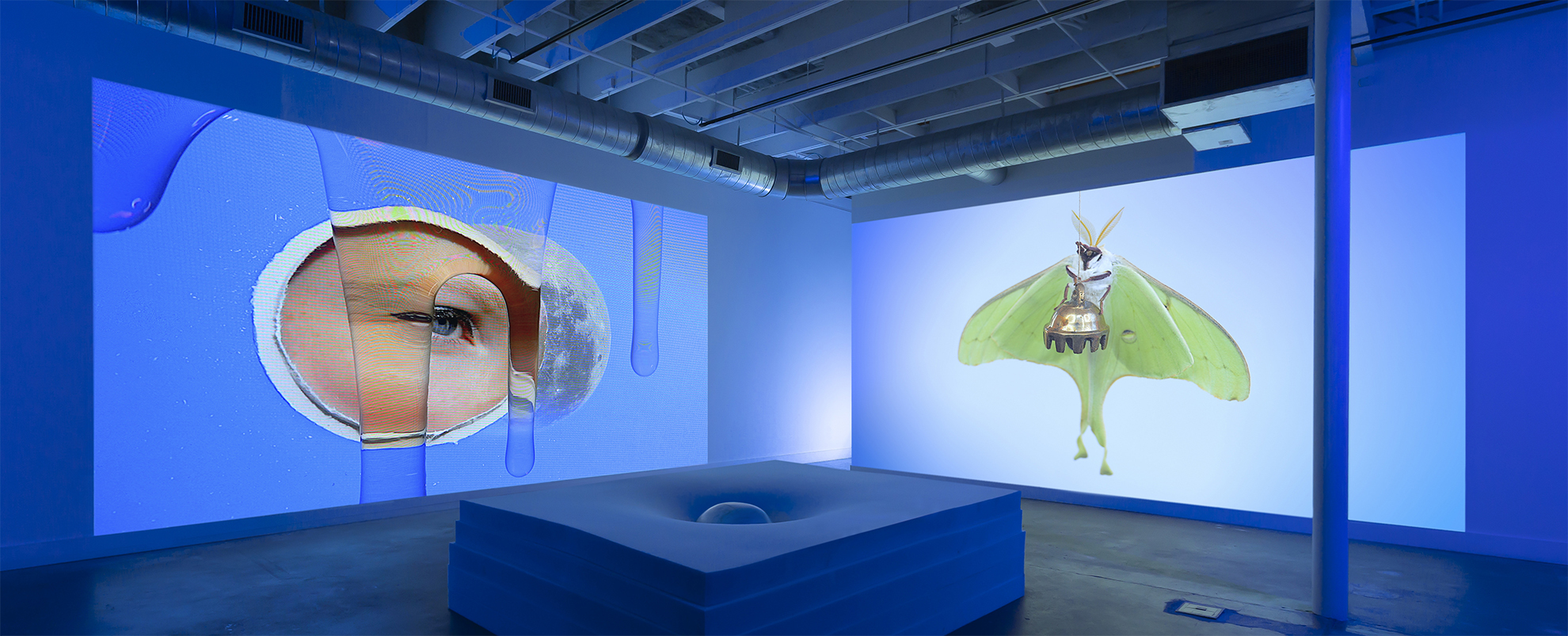A fuzzy white moth emerges from its cocoon, its underdeveloped pale yellow wings still tucked near its body. As it makes its way along a piece of thread strung between the posts of a four-poster bed (moth-sized, mind you), on which rests the moon herself, small brass bells hanging from the thread gently chime, all within an endless environment of electric blue. The moth pauses, upside down, allowing its wings to slowly expand and unfurl, as a wash of bright lime-green pigment spreads to the tails. The ASMR-inducing sounds of a gentle rainstorm and rolling thunder, interspersed with synth pops and clicks, orchestrate the surreal scene.
The drama described above, titled MOON MOTH BED (2023), is not your typical nature documentary. Austin-based artist Virginia L. Montgomery created this video for EYE MOON COCOON, her fall 2023 exhibition at Austin’s Women & Their Work, who invited her to create a large immersive installation that referenced Texas and the Texas ecosystem. She also wanted to incorporate a contemporary feminist element, informed by the writings of Simone de Bouvier, Donna Haraway, and Amy Ireland, a sampling of women who have influenced Montgomery’s work, specifically in the realms of ecofeminism and feminist metaphysics.
Born and raised in Texas, Montgomery comes from a family of people in the sciences, not the arts. She received her MFA from Yale University and her BFA from the University of Texas at Austin, where, as a student of performance and video artist Mike Smith, she learned how to shoot and edit video using mini-DV tapes.
Today Montgomery uses her visual art practice as a way of exploring ideas within surrealism, which, as she explains, is inherently abstract, operating within the language of the subconscious and communicating through symbols. In addition to making art, she also freelances as a professional graphic facilitator, a line of work that has made her hyper-aware of how symbols are legible.
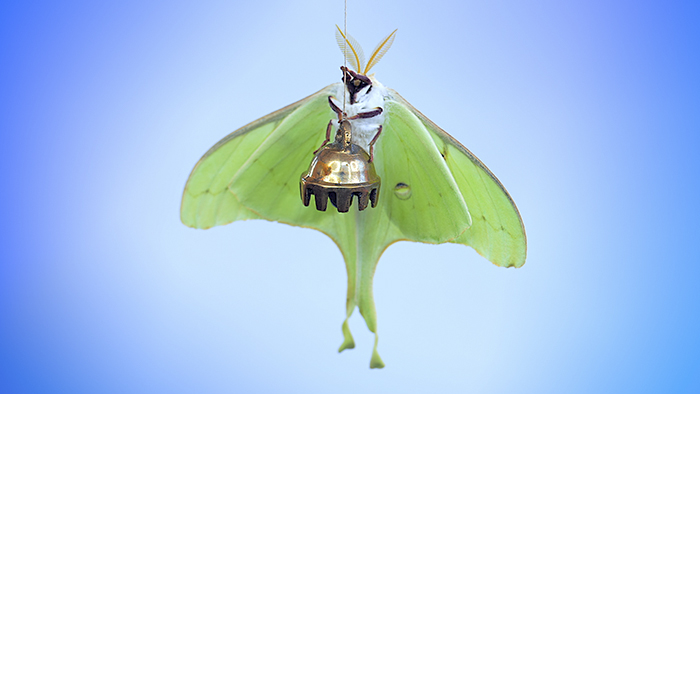
1 ⁄5
Virginia L. Montgomery, Luna Belle, 4K Digital Video, 06:00, Image still, 2023

2 ⁄5
Virginia L. Montgomery, Eye Moon Cocoon, Solo show, Installation image, 2023, Women & Their Work, Austin, TX
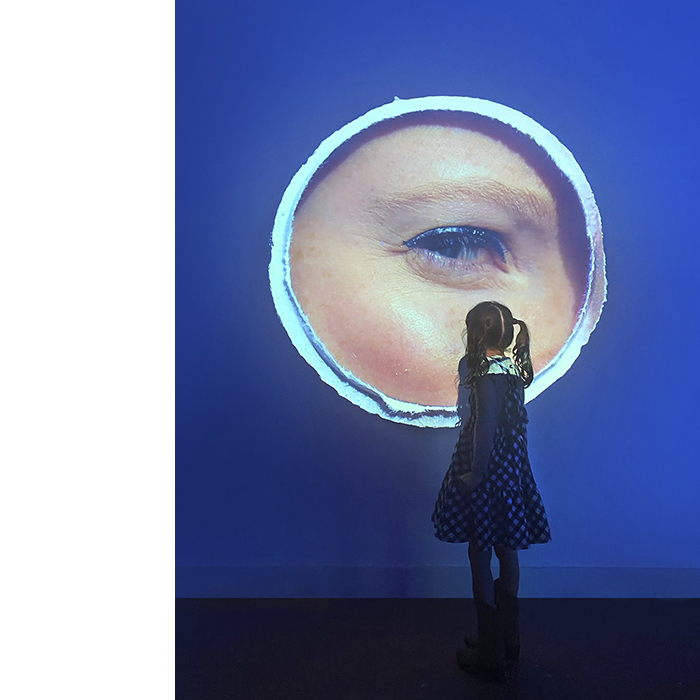
3 ⁄5
Virginia L. Montgomery, Eye, Video projection, Installation image, 2023, Women & Their Work, Austin, TX
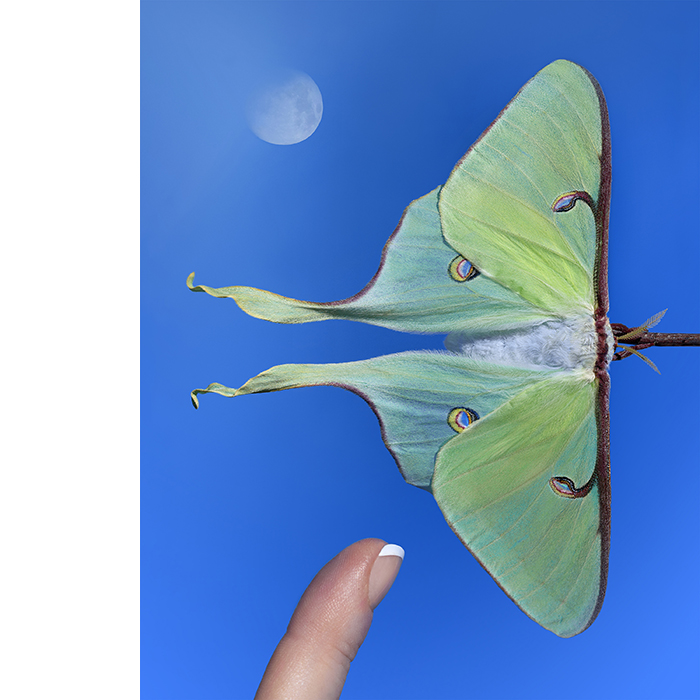
4 ⁄5
Virginia L. Montgomery, Pointe Luna, Photograph, 20" x 30", 2023
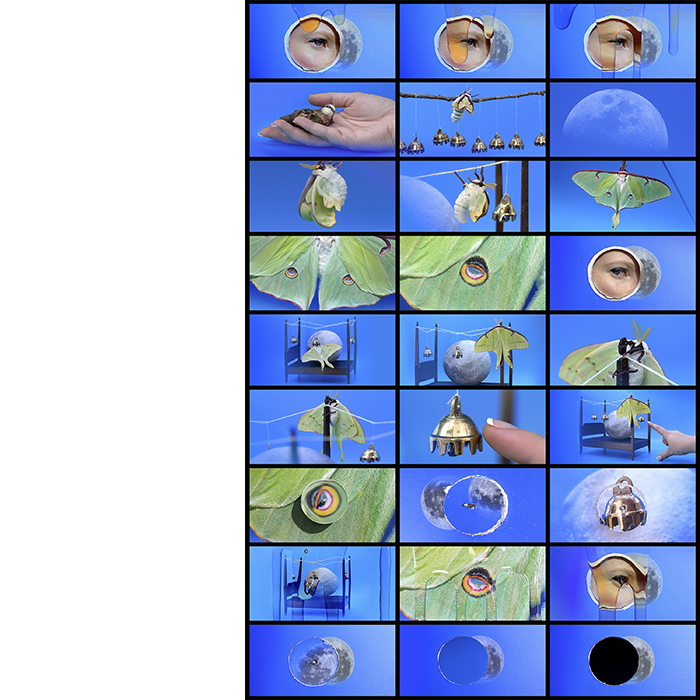
5 ⁄5
Virginia L. Montgomery, Moon Moth Bed Grid 1, Photograph, 20" x 30", Grid of image stills from video Moon Moth Bed, 2023
Perhaps it goes without saying that there is no “typical” studio day for Montgomery. Just as there’s no typical viewer.
“When I think of experiencing art, I think of it as a bodily exercise in choreographic engagement. Someone can be walking or moving around a sculpture. Or they can sit in front of a video and notice how their own body relates in scale, or how they may feel as the video’s blue light falls upon their skin, or hear the rumbling of a soundscape reverberate through the room,” she says.
“I’ll also add an audio component that is unexpected, like the sound of a water droplet, because that is what I auditorily experience when I see an object quickly appear on screen” she explains. “With movement, my mind always ascribes a noise like a ‘pop.’ Scoring my work is intuitive because I just let my mind compose the unique soundscape it naturally manifests.”
Whether it’s niche esoteric philosophy or performing as a lonesome corporate conference cheese danish with a deep-seated desire for happiness, Montgomery wants to ensure that her work is accessible for every audience—from a seven-year-old Girl Scout to a ninety-year-old grandmother entering an art museum for the first time. Her belief is straightforward and steadfast: “The best way to engage visual art is also to make space for the sensorial and the experiential.”
—NANCY ZASTUDIL

